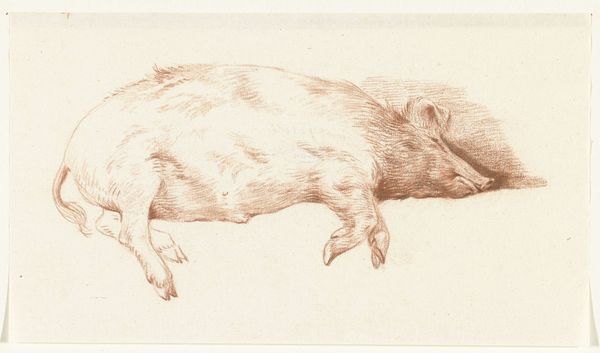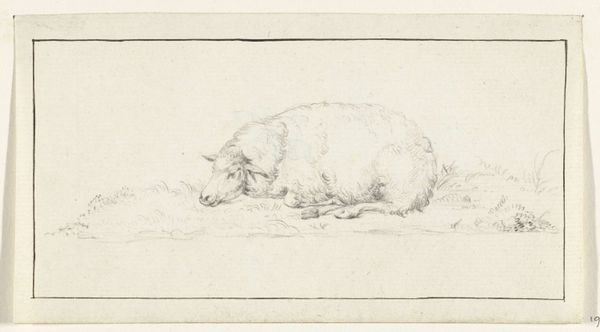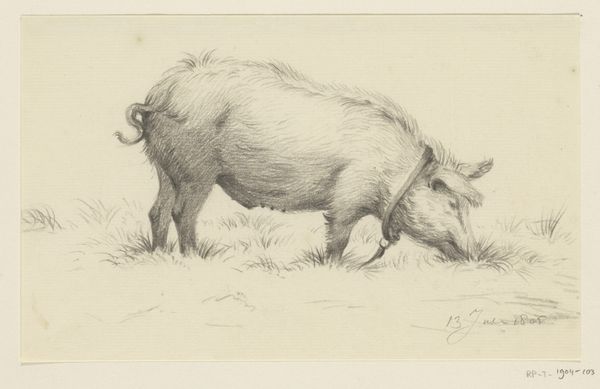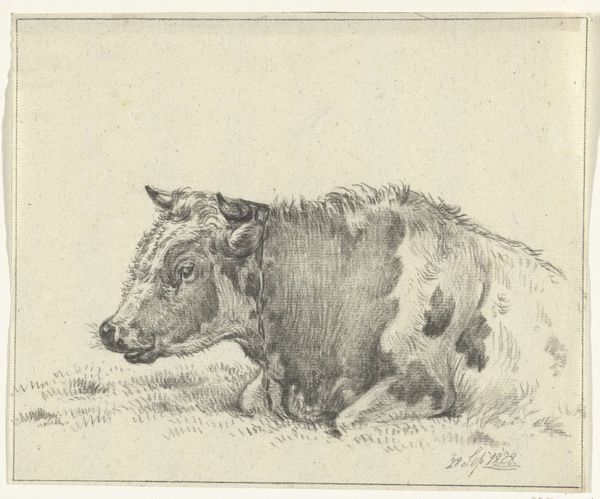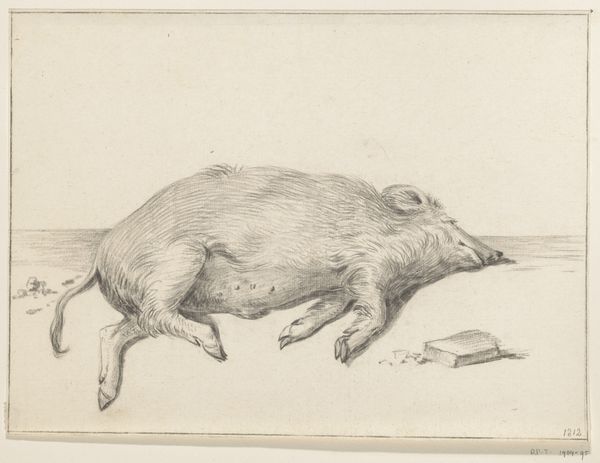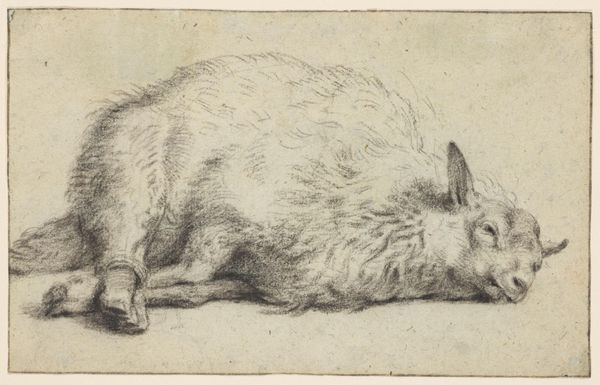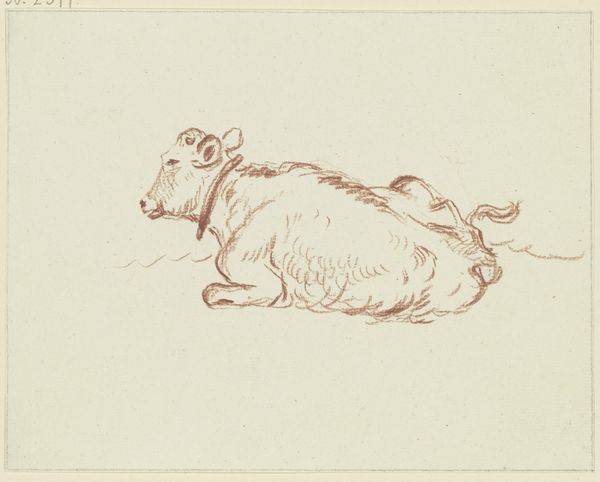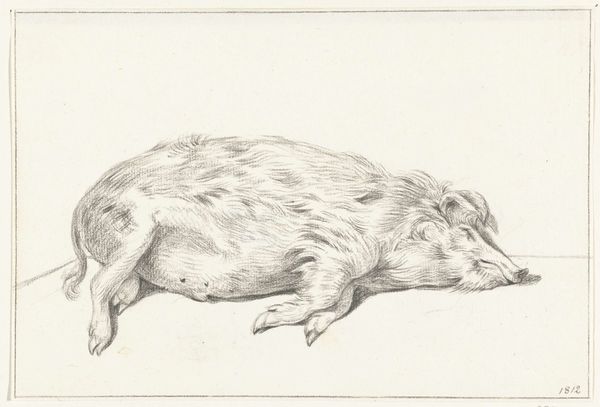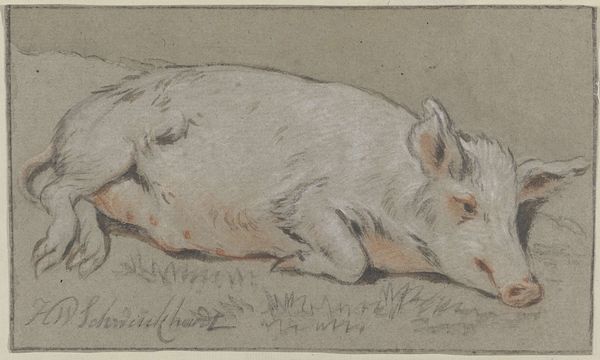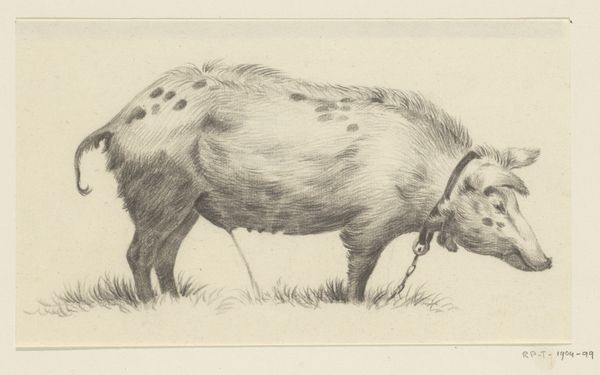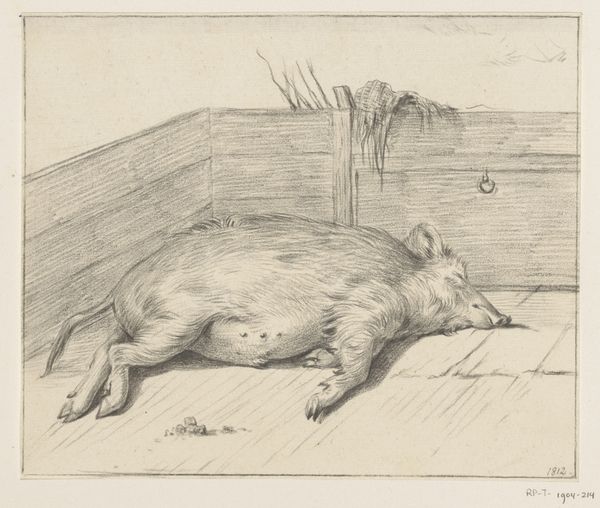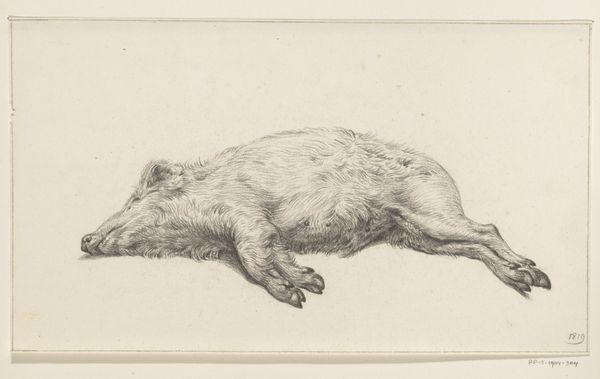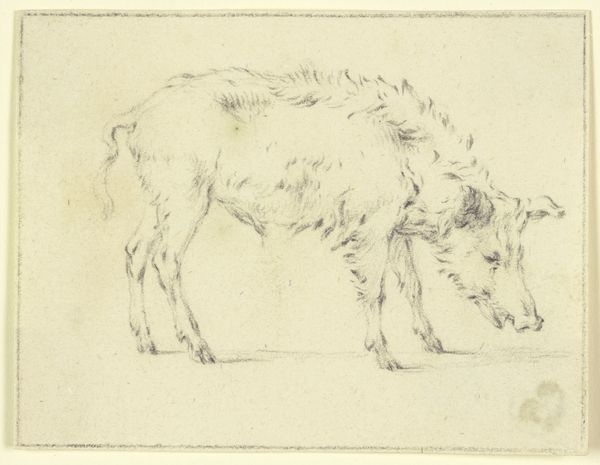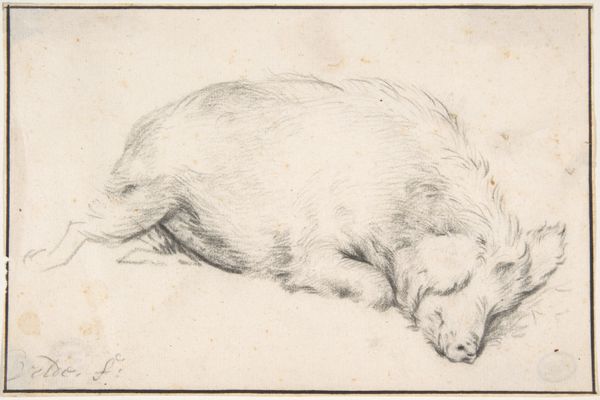
drawing, paper, ink
#
portrait
#
drawing
#
animal
#
landscape
#
etching
#
paper
#
ink
#
realism
Dimensions: height 172 mm, width 246 mm
Copyright: Rijks Museum: Open Domain
Jean Bernard created this study of a pig, in pen and brown ink, likely in the Netherlands sometime between the late 18th and early 19th centuries. Its naturalistic style aligns with the broader Enlightenment project of observing and classifying the natural world. But what does it mean to represent an animal this way? In Dutch Golden Age painting, farm animals appear frequently, often laden with symbolic meaning. In the context of rapidly expanding agricultural markets, depictions of livestock also served as a kind of advertisement, communicating the prosperity and productivity of Dutch farms. In Bernard’s rendering, the pig is presented as a specimen, isolated from any particular setting. Perhaps it's a study for inclusion in a larger composition, but it might also reflect the growing interest of artists in the objective observation and recording of animal anatomy. To further understand this drawing, one could research the artist’s biography, the artistic conventions of the time, and the economic and social history of Dutch agriculture. The meaning of art is always contingent on its historical context.
Comments
No comments
Be the first to comment and join the conversation on the ultimate creative platform.
